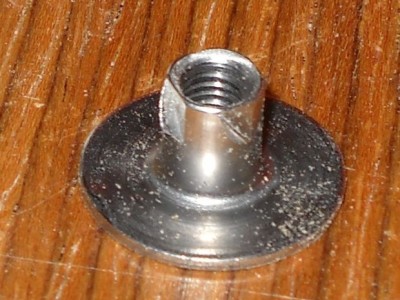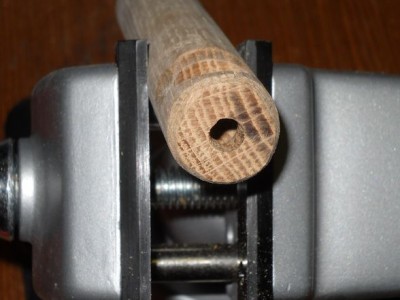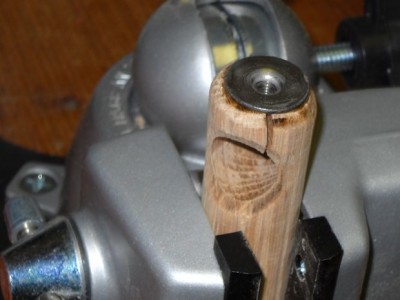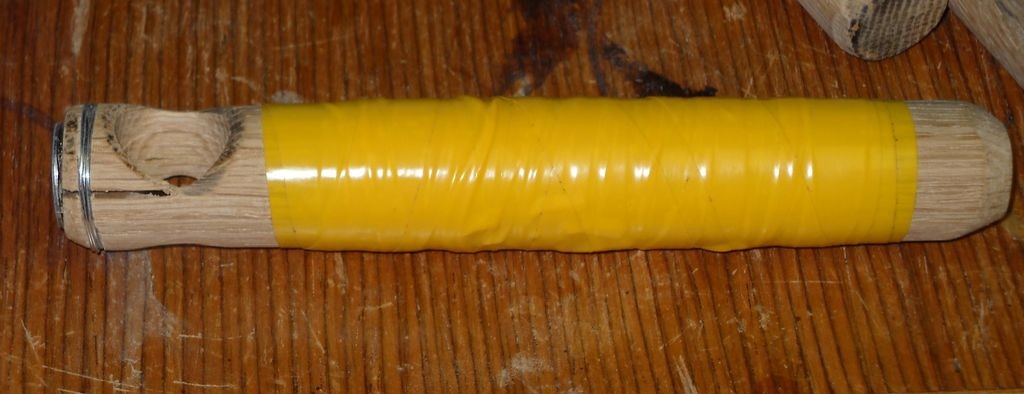Adapted Pen/Marker Holder
September 25, 2015 in Solution
This post was originally on www.instructables.com created by user shadowwynd
Many disabilities such as cerebral palsy make it hard to grip a pen, pencil, or marker. Some people can grab a pen in their fist and draw that way, but others lack the ability to keep their hand in a vertical configuration. This means that can only hold a pen sideways; hence they can not use it. This device is something we have used with several students. It adapts to hold pens, markers, pencils, and even small paint brushes. The student can then draw on paper.
These instructions will show a couple ways to make this, my preferred way (wood) and then a couple cheaper ways out of PVC for those with less money or tools.
Step 1: Supplies & Tools
Supplies (Preferred way):
1 x 36″ dowel (I often use 1″ or 7/8″, based on individual) (oak or pine, will make 5-6 holders) ($4)
Electrical tape or rubber tape
Hurricane Nuts ($5 for 50) (or t-nuts with the smaller holes for screws)
1″ Plastic headed thumbscrews (# 91185A554 @ Mcmaster-Carr) ($7.49 for 10)
Glue (Gorilla glue, E6000, etc.)
Spade bits
Sandpaper
Steel wire
Supplies (cheap way #1):
1/2″ , 3/4″, or 1″ PVC pipe
“T” connectors
1/4-20 1″ bolt or 1/4-20 1″ Thumbscrew
Electrical tape
Supplies (cheap way #2):
1/2″ , 3/4″, or 1″ PVC pipe
“T” connectors
1/4-20 wingnut
1/4-20 1″ bolt or 1/4-20 1″ Thumbscrew
Electrical tape
Duct Tape
Tools: (Preferred way)
Drill press
Drum sander
Saw
Dremel
Pliers or ClampTite
Tools: (Cheap way #1)
PVC cutter or saw
1/4-20 screw tap
Drill
Tools: (Cheap way #2)
PVC cutter or saw
Dremel or File
Drill
Step 2: Cut wood to size, shape
Cut the dowels into 6″ or so lengths for adults. Children need about 4.5″, some adults prefer a smaller one that can fit in a hand, some want a longer one, etc. You can always cut a longer one shorter if the need arises. For teenagers upwards, I often make a combination of 6″ and 6.5″.
A table saw or chop saw is good for this step; lacking those tools I used a handsaw.
Using the sander, bevel one end of each cylinder so that it is rounded / domelike. This end may be in someone’s hand, so no corners or sharp edges. Slightly bevel the other end enough to remove sharp edges.
Step 3: Drill hole for marker / pen
I used a spade bit in the drill press to bore a hole through each dowel. I used 3/4″ for the 1″ dowels, and 5/8″ for the 7/8″ dowels. You do need to leave enough wood on either side that you still have some structural integrity. Obviously, the larger hole can accommodate bigger markers (such as whiteboard markers). Too big and the wood breaks; too small and many pens won’t fit.
I normally make the outer radius of the hole about 1/4″ from the end of the cylinder.
Using the drum sander, I bevel each side of the hole to remove rough edges.
Sand all sides with sandpaper to remove any splinters.
Step 4: Drill hole for nut
Drill a hole through the end of each dowel (on the axis of the dowel, in the center, on the end closest to the big hole). This is for the T-nuts / insert nuts / hurricane nuts. It often helps to predrill a pilot hole.
Step 5: Add hurricane nuts
Smear glue on the hurricane nut, then tap the shaft of the nut into the hole with a hammer.
The force from the thumbscrew is directed outwards.
The proper nut to use in this case is the insert nut. I don’t have good luck with these and end up destroying most of them trying to get them in. In this design, we also don’t have much wiggle room and the insert nuts take up more space, which then requires a longer thumbscrew.
T-nuts are intended to be used the other direction – the load pulls against the threads, which pushes the flange against the material. They aren’t designed to be pushed against. A hammer-in style T-nut will pop right out again when the thumbscrew is tightened. I sometimes use the T-nuts that are screwed in to the material using little bitty screws (like these), but the little bitty screws are easy to lose in a shop, are hard to drive, sometimes pop out of holes if predrilled, etc. The hurricane nuts seem to hold very well.
The problem with the hurricane nuts is that they tend to split the wood. So far I have had pine, oak, and poplar split on me. Sometimes the thicker 1″ cylinders arrive OK, but the smaller pieces split every time.
To remedy this, I cut a small channel around the top with the dremel. I put a couple of loops of steel wire in the channel, then twist it with pliers or use the ClampTite tool to tighten the loops. This prevents further expansion of the wood.
Sand everything.
Step 6: Grip and Thumbscrew
Wrap electrical tape or rubber tape. This gives it a grip that is easier to hold than slick wood.
Insert the thumbscrew into the hurricane nut. For these, I distinguish dowel sizes by thumbscrew color.
Step 7: Usage
Put a pen/marker in the large hole, tighten the thumbscrew to secure it.
Draw on paper.










Leave a reply
You must be logged in to post a comment.